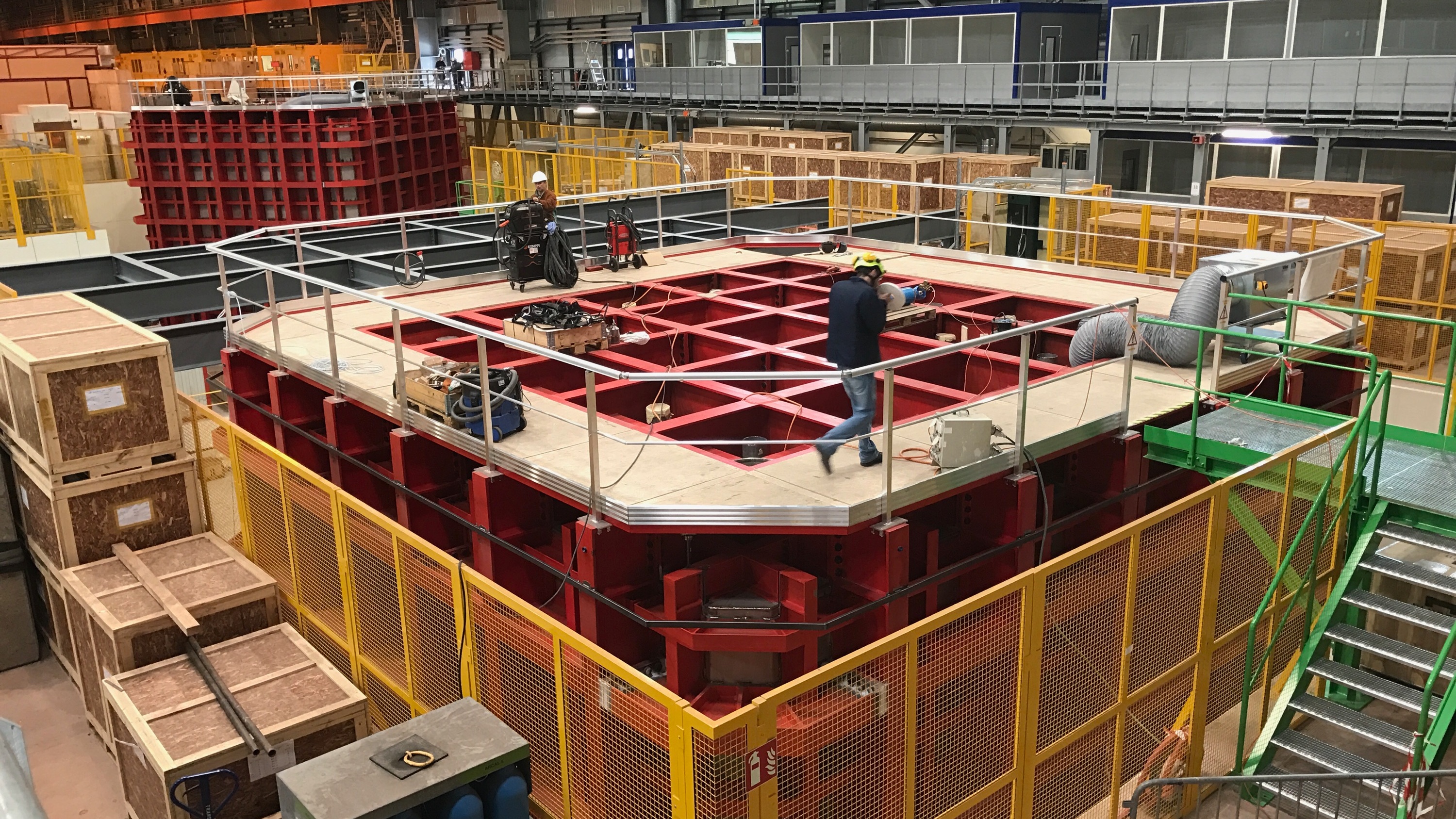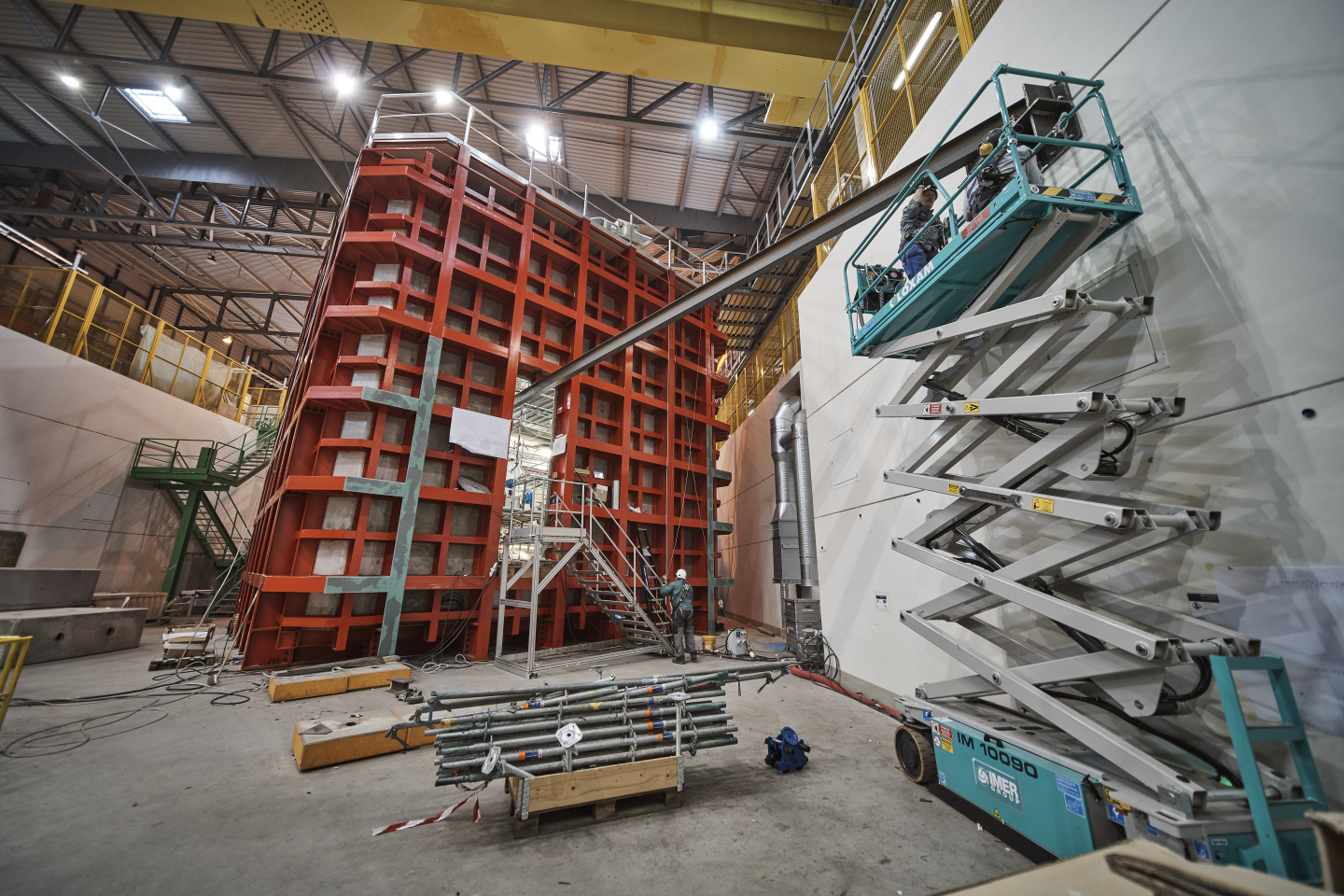DUNE prototype detector recorded first particle tracks
World science, 24 July 2017
In a lab at CERN, a DUNE prototype detector recorded its first particle tracks on 21 June 2017. The prototype holds five active tons—3000 liters—of liquid argon. It’s small compared to the end goal of DUNE, which will hold 40,000 active tons of liquid argon.
The Deep Underground Neutrino Experiment (DUNE), a new globally organized endeavor with large international partnerships, grows out of a former neutrino research collaboration known as the Long Baseline Neutrino Experiment (LBNE). By studying neutrinos and antineutrinos that travel 1300 km (800 miles) through the Earth from the US Department of Energy’s Fermi National Accelerator Laboratory to the DUNE detectors, scientists aim to discover differences in the behavior of matter and antimatter. This could point the way toward explaining the abundance of matter over antimatter in the universe. The supersensitive detectors will also be able to capture neutrinos from exploding stars (supernovae), unveiling the formation of neutron stars and black holes. In addition, they allow scientists to hunt for a rare phenomenon called proton decay.
There are a few goals of the experiment, but a major one is to better understand a strange effect called neutrino oscillation. Understanding neutrino oscillations could help us elucidate the very nature of the universe. This provide answers to some major mysteries in physics, such as why is the Universe made entirely of matter and not antimatter. But the experiment has other purposes too, like trying to see whether protons, one of the two elementary particles that make up the atom’s nucleus, decay into other, smaller subatomic particles. No one’s ever observed such an effect.
 DUNE prototypes at CERN (Image: Ryan F. Mandelbaum)
DUNE prototypes at CERN (Image: Ryan F. Mandelbaum)
 This 11-meter high prototype at CERN will refine neutrino detector technology. The final DUNE detectors will be 20 times larger than this prototype and located in the new LBNF cavern in the United States. (Image: M. Brice, J. Ordan/CERN)
This 11-meter high prototype at CERN will refine neutrino detector technology. The final DUNE detectors will be 20 times larger than this prototype and located in the new LBNF cavern in the United States. (Image: M. Brice, J. Ordan/CERN)
More information:
World’s biggest neutrino experiment moves one step closer by www.symmetrymagazine.org
Groundbreaking for an international neutrino experiment by www.cern.ch